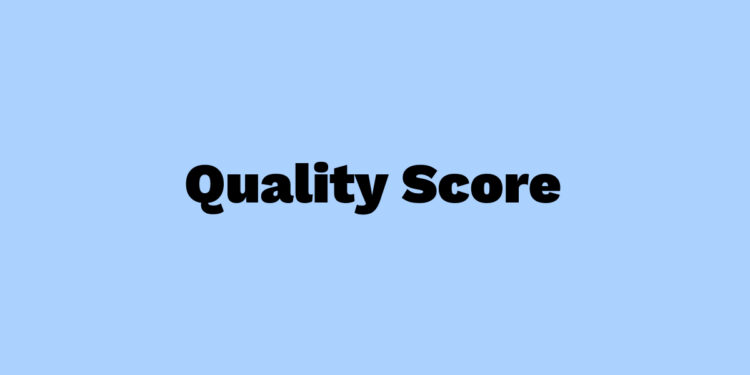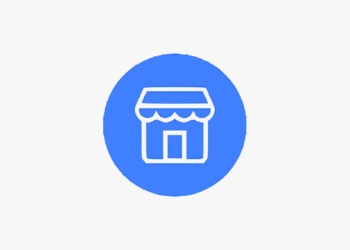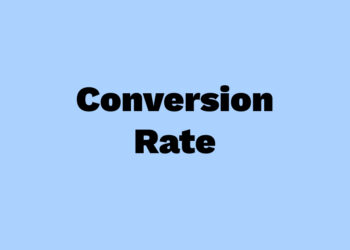Google Ads Quality Score is a 1-10 rating that determines how much you pay per click and where your ads appear. A higher Quality Score means lower costs and better ad positions—potentially saving you 30-50% on advertising spend while improving campaign performance.
This guide shows you exactly how to check, understand, and optimize Quality Score with proven strategies from 200+ Google Ads accounts across global and MENA markets.
💡 Quick Quality Score Impact
Quality Score 7/10 vs 3/10: Pay 64% less per click
Quality Score improvement: 6/10 → 8/10 = 33% cost reduction
Scroll down for step-by-step optimization strategies.
What is Google Ads Quality Score?
Quality Score is Google’s rating of your ad quality and relevance on a scale of 1-10. It directly impacts two critical factors:
- Cost Per Click (CPC): Higher Quality Score = Lower costs
- Ad Position: Higher Quality Score = Better placement
Google uses Quality Score to ensure users see relevant, helpful ads instead of irrelevant spam. When your ads match user intent perfectly, everyone wins—users find what they need, you get qualified traffic, and Google maintains user trust.
Why Quality Score Matters for Your Business
Cost Savings Example:
- Monthly ad spend: $10,000
- Quality Score improvement: 5/10 → 8/10
- Cost reduction: ~40%
- Monthly savings: $4,000
Performance Benefits:
- Lower CPCs: Same budget, more clicks
- Better ad positions: More visibility and traffic
- Higher CTRs: Relevant ads get more clicks
- Improved ROAS: Lower costs + better performance = higher returns
5 Quality Score Improvements You Can Make Today
Before diving deep, here are quick wins that can improve your Quality Score within 24-48 hours:
- Add your target keyword to ad headlines – Improves ad relevance immediately
- Enable all relevant ad extensions – Increases CTR and ad real estate
- Match landing page headline to ad copy – Improves landing page experience
- Remove broad match keywords under 6/10 Quality Score – Focus budget on winners
- Add negative keywords for irrelevant terms – Improves CTR by blocking bad traffic
The 3 Quality Score Factors (And How Much Each Matters)
Google evaluates Quality Score based on three main components:
1. Expected Click-Through Rate (CTR) – 40% Weight
What it measures: How likely people are to click your ad based on historical performance.
Status indicators:
- “Above average”: Your CTR outperforms similar keywords
- “Average”: Your CTR matches typical performance
- “Below average”: Your CTR underperforms (needs improvement)
Quick CTR improvements:
- Include target keywords in ad headlines
- Write compelling, specific ad copy
- Use ad extensions (sitelinks, callouts)
- Create urgency with time-sensitive offers
2. Ad Relevance – 30% Weight
What it measures: How closely your ad copy matches the searcher’s intent.
Optimization strategies:
- Keyword mirroring: Include exact search terms in headlines
- Intent matching: Address what users actually want
- Tight ad groups: 5-10 related keywords maximum
- Dynamic keyword insertion: Automatically match search terms
3. Landing Page Experience – 30% Weight
What it measures: How relevant and useful your landing page is after the click.
Landing page essentials:
- Message match: Landing page headline mirrors ad copy
- Page speed: Loads in under 3 seconds
- Mobile optimization: Works perfectly on mobile devices
- Clear navigation: Easy to find information and take action
- Relevant content: Directly addresses search query
How to Check Your Quality Score (Step-by-Step)
Method 1: Keywords Tab (Current Data)
- Log into your Google Ads account
- Navigate to Keywords in the left menu
- Click Columns at the top
- Select Modify columns
- Under Quality Score, add:
- Quality Score
- Landing page experience
- Ad relevance
- Expected CTR
- Click Apply
Method 2: Historical Data Analysis
- Go to Keywords tab
- Add Quality Score columns (as above)
- Change date range to Last 30 days
- Sort by Quality Score (lowest to highest)
- Identify keywords with scores below 6/10
⚠️ Important: Quality Score only shows for keywords with sufficient data. New keywords may show “—” until they accumulate enough impressions and clicks.
Quality Score Benchmarks by Industry
Based on analysis of 200+ Google Ads accounts across various industries
High-Performing Industries
- Legal Services: Average QS 7.2/10
- Healthcare: Average QS 6.8/10
- Financial Services: Average QS 6.5/10
- Professional Services: Average QS 6.4/10
Competitive Industries
- E-commerce/Retail: Average QS 5.8/10
- Technology: Average QS 5.6/10
- Real Estate: Average QS 5.9/10
- Travel: Average QS 5.4/10
The Complete Quality Score Optimization Framework
Phase 1: Audit Current Performance (Week 1)
Quality Score Audit Checklist:
- Overall account QS: Calculate weighted average across all keywords
- Low-performing keywords: Identify all keywords with QS below 6/10
- Budget impact analysis: Which low-QS keywords consume most budget?
- Component breakdown: Which factor (CTR, relevance, landing page) needs most work?
Phase 2: Campaign Structure Optimization (Week 2)
Ad Group Restructuring:
- Single Keyword Ad Groups (SKAGs): One keyword per ad group for maximum relevance
- Theme-based grouping: Group 3-5 closely related keywords
- Match type strategy: Start with exact match, expand gradually
- Negative keyword lists: Prevent irrelevant traffic
Phase 3: Ad Copy Optimization (Week 3)
High-Quality Score Ad Copy Formula:
Headline 1: Include primary keyword + benefit
Headline 2: Address user pain point or desire
Headline 3: Include location (if relevant) + call-to-action
Description: Expand on benefit + include secondary keywords + clear CTA
Example (Dubai Real Estate):
- Headline 1: “Luxury Apartments Dubai Marina”
- Headline 2: “Waterfront Living with Payment Plans”
- Headline 3: “View Properties Today”
- Description: “Discover premium 1-3 bedroom apartments in Dubai Marina with flexible payment options. Sea views, world-class amenities. Schedule viewing now.”
Phase 4: Landing Page Optimization (Week 4)
Quality Score Landing Page Checklist:
Above the Fold:
- Headline match: Mirrors ad headline exactly
- Value proposition: Clear benefit statement
- Visual relevance: Images support the message
- Call-to-action: Prominent, action-oriented button
Technical Performance:
- Page speed: Under 3 seconds load time
- Mobile responsiveness: Perfect mobile experience
- SSL certificate: Secure HTTPS connection
- Error-free: No broken links or missing images
MENA-Specific Quality Score Optimization
UAE Market Insights
- English keywords: Average QS 6.2/10
- Arabic keywords: Average QS 5.8/10
- Bilingual ads show 15% higher Quality Scores
- Local business terms perform better than generic keywords
Saudi Arabia Optimization
- Mobile-optimized landing pages crucial (80% mobile traffic)
- Cultural relevance in ad copy improves scores 20%
- Local payment methods boost landing page experience
- Evening campaigns (7-11 PM) show better engagement
Regional Best Practices
Arabic Keyword Optimization:
- Local terminology: Use region-specific Arabic terms
- Cultural context: Respect local values and traditions
- Technical considerations: Right-to-left text, proper fonts
- Mobile optimization: Arabic text display on mobile devices
Quality Score Troubleshooting Guide
Low Expected CTR Solutions
If Expected CTR is “Below Average”:
- Rewrite ad headlines: Include target keywords naturally
- Add emotional triggers: “Save,” “Free,” “Guaranteed,” “Now”
- Create urgency: “Limited time,” “Today only,” “While supplies last”
- Test ad extensions: Increase ad real estate and CTR
Poor Ad Relevance Fixes
If Ad Relevance is “Below Average”:
- Keyword-to-ad alignment: Include exact keywords in ad copy
- Tighten ad groups: Fewer, more related keywords per group
- Match search intent: Informational vs commercial vs transactional
- Use dynamic keyword insertion: {KeyWord:Default Text}
Landing Page Experience Issues
If Landing Page Experience is “Below Average”:
- Speed optimization: Compress images, minify code
- Mobile testing: Test on actual mobile devices
- Content relevance: Match landing page to ad promise
- Trust signals: Add reviews, certifications, contact info
Advanced Quality Score Strategies
Ad Extensions for Quality Score Boost
High-Impact Extensions:
- Sitelinks: 4-6 additional landing pages
- Callouts: 4-6 key benefits or features
- Structured snippets: Specific categories (services, brands, types)
- Call extensions: Phone number with call tracking
- Location extensions: Business address and map
Audience Targeting for Quality Score
High-Quality Score Audiences:
- Website visitors: Already familiar with your brand
- Customer lists: Existing customers for upsells
- Lookalike audiences: Similar to best customers
- In-market audiences: Actively researching your category
Quality Score Monitoring and Maintenance
Weekly Quality Score Review
Key metrics to monitor:
- Account average Quality Score: Overall performance trend
- Low-performing keywords: QS below 6/10 need attention
- Budget allocation: High-spend, low-QS keywords to optimize
- New keyword performance: Recent additions gaining/losing score
Monthly Optimization Tasks
Quality Score maintenance checklist:
- Ad copy refresh: Update underperforming ads
- Landing page audits: Check page speed and mobile experience
- Keyword pruning: Pause consistently low-performing terms
- Extension updates: Refresh sitelinks and callouts
- Negative keyword additions: Block irrelevant traffic
Frequently Asked Questions
How long does it take to improve Quality Score?
Quality Score updates can happen within hours for high-traffic keywords, but typically takes 1-2 weeks to see significant changes. Low-traffic keywords may take 30+ days to accumulate enough data for score updates.
Can I improve Quality Score without changing my landing page?
Yes, but with limitations. You can improve CTR through better ad copy and relevance through tighter keyword grouping. However, landing page experience is 30% of the score, so page improvements often provide the biggest gains.
Should I pause keywords with low Quality Scores?
Not immediately. First, try optimization strategies for 2-4 weeks. If Quality Score remains below 4/10 and the keyword has high volume, consider pausing and focusing budget on higher-performing terms.
Do Quality Scores differ between countries?
Quality Score calculation is consistent globally, but performance can vary due to local competition, language factors, and user behavior differences. Arabic keywords in MENA markets may score differently than English equivalents.
How does Quality Score affect automated bidding?
Higher Quality Scores give automated bidding strategies more opportunities to win auctions at lower costs. Poor Quality Scores limit bidding algorithm effectiveness and reduce overall campaign performance.
Can I see historical Quality Score data?
Google only provides current Quality Score data. However, you can track trends by downloading reports regularly and maintaining your own historical database for long-term analysis.
Related Articles
🎯 Ready to Improve Your Quality Score?
Our Google Ads specialists have optimized Quality Scores for 200+ accounts, achieving average improvements of 2-3 points and cost reductions of 30-50%.
Get expert Quality Score optimization:
- Free Google Ads account audit with Quality Score analysis
- Custom optimization strategy for your campaigns
- Regional expertise for MENA, US, UK, and Australian markets
- Proven track record of significant cost savings





